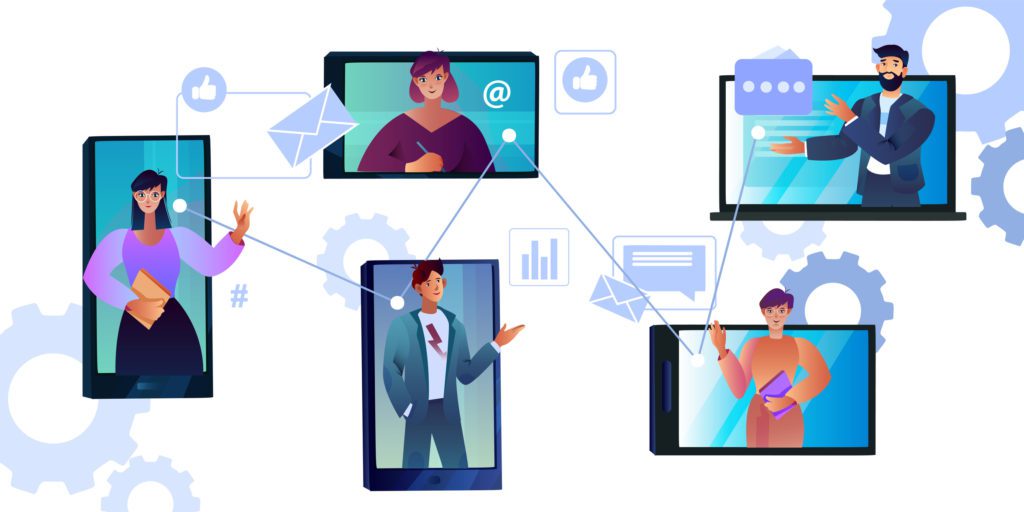Agility May Be a Buzzword But It’s Critical for a Positive Learning Experience

As a learning and development (L&D) professional, you might be sick of hearing the word “agility,” as it’s everywhere you look these days. But don’t let the buzz of the word turn you off—because it’s absolutely critical to the success of your L&D strategy and systems.
So what does agility really mean to your organization, and why do you need it?
The Reality of Recovery and the Learning Experience
The current work environment is in transition as companies figure out a return to work strategy and what that looks like. In fact, in a recent Brandon Hall Group survey, 36% of leaders say that more than three-quarters of their workers are still remote. In the wake of the pandemic, everyone is realizing the challenges of engaging employees, making them feel safe, and maintaining a cohesive company culture in a state of constant change. But that’s the reality now.
This means that the learning experience needs to keep pace with dynamic change. And that’s going to require a different approach to traditional learning, training, and development. We saw this in play during the pandemic—in-person, instructor-led training (ILT) came to a grinding halt yet employees still needed to be trained to do their jobs.
Interestingly, workforce enablement jumped from 8th priority in 2019 to top priority for CIOs (2020 Harvey Nash/KPMG CIO Survey). And the top learning priorities for pandemic recovery right now are developing leadership skills (77%), upskilling/reskilling for the future (74%), and training for skills needed now (69%) (Brandon Hall Group).
Thriving now, and in the years to come, requires teams to be engaged, productive, and adaptable to ever-changing circumstances, which is where agility is critical.

The Digital Transformation of the Learning Experience
Companies had the digital transformation of learning on their to-do lists for a long time before the pandemic, and we saw that those who were already farther ahead on the path did better in responding to the workforce safety, operational, and engagement challenges during the pandemic. And those who weren’t on the path recognized the limitation of the systems and processes they had.
Now it seems that the majority of companies see that the digital transformation of learning will only increase (51%) and that they plan to purchase or upgrade learning technology due to the pandemic (44%) whereas a smaller group say they’ll go back to how things were before the pandemic (18%) (Brandon Hall Group). A whopping 89% of CIOs say the pandemic has shown the need for more agile and scalable IT to allow for contingencies for learning as well (Dell Technologies, Digital Transformation Study).
This means that the learning experience needs to keep pace with dynamic change. And that’s going to require a different approach to traditional learning, training, and development.
One thing the pandemic did was highlight the huge gap in workforce enablement and it uncovered the need to reinvent how L&D organizations deliver digital experiences to customers, employees, and partners. Even now, a lot of learning and training content is still distributed, on paper, in LMS, or other systems. And simply taking ILT content and putting it into a slide deck on Zoom isn’t a long-term solution.
A true digital transformation of learning means reinventing and rethinking content authoring, delivery, and tracking in a way that engages and empowers each employee. Again, it requires agility.
The Future of the Learning Experience
The other reality is your L&D organization may not have the budget or resources to rethink and revamp its strategy even though it’s imperative for thriving. So, what do you do?
The beauty of today’s environment means you don’t have to “rip and replace” your systems or processes. You simply need to identify where mission-critical knowledge is required, and that’s where digital transformation and agility come in.
There will always be a need for traditional ILT learning but the toughest challenge is how to deliver operational learning (56% of companies said adjusting business operations is the toughest challenge) (Brandon Hall Group).
Mission-critical knowledge is your secret sauce and at the heart of what makes your company unique. When you identify what you do to decrease employee ramp time, improve customer service, shave time off calls, cross or upsell, save subscriptions that want to cancel, provide service that helps to increase NPS scores, decrease mistakes and deliver very specific knowledge in these areas, that’s when the learning experience truly add value to your employees, customers, and your company.
And guess what? Agility is a key part of achieving it. Dig deeper into learning agility by watching the on-demand webinar featuring the Brandon Hall Group: Designing Agility into Your Learning Strategy and Systems.
